The best algorithmic reverb plug-ins of 2022
You can never own too many algorithmic reverb plug-ins! That’s why today we have a selection of the current best plug-ins in this category. Among the selection are some classics, a brand new plug-in, and a sound design monster! To get you started, we have a tip for every tool, so you can get more out of it. What are your favorites? Which reverb plug-in do you take to your desert island? Let us know in the comments!
Algorithmic reverb plug-ins: A short history in reverb
One reverb is not the same as the next one in music production. There are a variety of reverb categories. For instance, spring reverbs, aptly named because the reverberation is created by running an audio signal through an actual spring, are often found in guitar amps. Especially since the resurgence of the canny eighties drum sound in many of today’s productions, plate reverbs with their metallic sound quality have been increasingly popular.
Then there are a number of different room reverbs which can create a small room impression, like a recording booth or a bath room with short decay times. In some plug-ins you can also find a dedicated chamber category. Here you can find room sizes with decay times that are a bit longer, like ball rooms or bigger recording rooms. And then there are the churches, stadiums, and arenas you find in the hall category with decay times of fifteen seconds or even more!
What is the difference between algorithmic and convolution?
Since not everyone has the opportunity to record in a church or arena, digital algorithmic reverbs, long before any plug-in solution, have been the choice to create a big hall sound. The two most famous examples are Lexicon 480L and Bricasti M7. These two rack effects created the reverb effect based on internal algorithms. Both excelled at their job so much that you can hear them in practically every big album production of the late eighties and early nineties.
As close as algorithmic reverbs came to the real thing, they never really fooled anyone. Reverb was just too complicated to create artificially. Until convolution reverbs came along. These powerful plug-ins with many gigabytes of libraries attached to them create the reverb effect based on so-called impulse responses (IRs). To put it into simple terms, IRs are created by recording a single loud clap or a sine sweep in the room you want to use as a reverb, basically as an acoustic imprint of the room. With a procedure called “de-convolve” the raw, reverb-less clap or sine sweep is then removed from the recording. What is left is the impulse response. There are a number of free and commercial plug-ins for convolution reverb with Audioease Altiverb 7 or EastWest Spaces II being among the most popular ones.
Baby Audio Crystalline
Just shy of one month old and already on a list! Baby Audio Crystalline is one of the best-sounding reverb plug-ins. Not only that, but it also boasts innovative features like synchronized pre-delay and decay times. In addition, a dedicated “gate” parameter quickly turns Crystalline into the gated reverb machine that you need for that eighties snare sound. Also, that shimmer knob makes Crystalline sparkle.
Tip: If you are looking to use Crystalline for sound design, take a close look at “Freeze”. Once activated, it holds tiny snippets of reverbed audio in Crystalline’s buffer. You can create beautiful, flickering soundscapes with that.

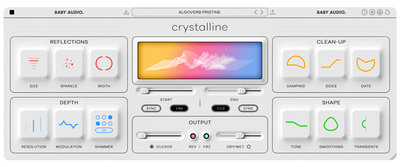
Sonible smart:reverb
AI algorithms have arrived in algorithmic reverbs! Not only does Sonible’s smart:reverb bring a very well-sounding reverb algorithm to the table. In addition, the plug-in’s AI algorithm analyses the input signal and adapts decay time and density automatically. If you’d rather do the work manually, you can set up every parameter like pre-delay, decay time, or density yourself.
Tip: smart:reverb has a couple of options included that are useful for sound design. With “Infinity” you can create endless reverb tails and ghostly vocal effects with the click of a button!

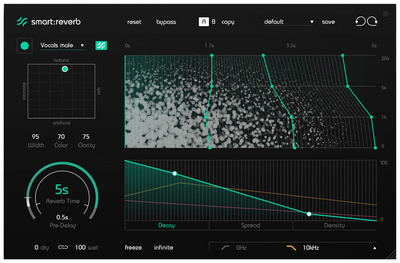
Relab Development LX480 Essentials
No single picture of a mixing desk in a studio in the eighties or nineties is complete without the little white LARC remote on top of it. It remotely controlled the immensely popular Lexicon 480L. The 480L can be found on countless records in the eighties and nineties. It was famous for its “plate”-setting. With the LX480, Relab has made the algorithmic reverb into a plug-in. The “Essentials” edition may just have four modes, but these four come awfully close to the original hardware.
Tip: If the reverb from the LX480 ever sounds too harsh, make use of the integrated low-pass filter to tame the higher frequency.

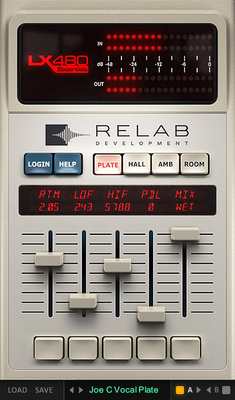
Eventide Blackhole
Blackhole by Eventide is almost a modern classic among algorithmic reverbs. This effect is not about realistic room effects, but dark, brooding, endless reverb tails from another planet. The plug-in became so popular at one point that Eventide put out a hardware pedal version of it. Blackhole’s algorithm is based on those included in the famous DSP4000 and H8000. It does not get much darker and alien-like than with this plug-in.
Tip: Use the “Hotswitch” to quickly change between two sets of settings of all the parameters. Because of the sudden switch the reverb rail becomes highly unstable. Any piano of guitar loop will turn in to lo-fi hip hop material immediately.

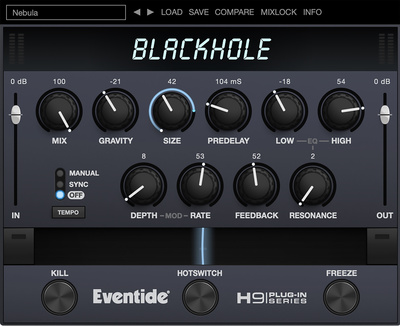
Sonnox Oxford Reverb Native
Sonox’s Oxford Suite is closing in on a decade in age, which in plug-in terms is making it almost vintage material. Nonetheless, Oxford Reverb is still among the best sounding algorithmic reverb plug-ins on the market. Additionally, the detail and flexibility of Oxford Reverb‘s parameters are almost unmatched. For instance, you can separately set and influence early reflections and the tail. With over 120 presets, you also have reverbs for just about any occasion.
Tip: Remove unwanted bass frequencies of the input signal with “LF Roll-Off”. Too much reverb on bass can make a track sound overly muddy. With this parameter you activate and set a dedicated high-pass filter.

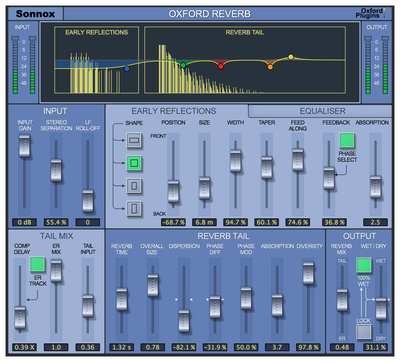
More on algorithmic reverb plug-ins
- Everything about Relab
- News about Baby Audio
- The latest on Sonible
- More about Eventide
- Sonnox News
Videos about algorithmic reverb plug-ins
You are currently viewing a placeholder content from YouTube. To access the actual content, click the button below. Please note that doing so will share data with third-party providers.
You are currently viewing a placeholder content from YouTube. To access the actual content, click the button below. Please note that doing so will share data with third-party providers.
You are currently viewing a placeholder content from YouTube. To access the actual content, click the button below. Please note that doing so will share data with third-party providers.
You are currently viewing a placeholder content from YouTube. To access the actual content, click the button below. Please note that doing so will share data with third-party providers.
You are currently viewing a placeholder content from YouTube. To access the actual content, click the button below. Please note that doing so will share data with third-party providers.
Note: This article contains affiliate links that help us fund our site. Don’t worry: the price for you always stays the same! If you buy something through these links, we will receive a small commission. Thank you for your support!
Originally published on Gearnews.de by Julian Schmauch.
6 responses to “The best algorithmic reverb plug-ins of 2022”

You are currently viewing a placeholder content from Facebook. To access the actual content, click the button below. Please note that doing so will share data with third-party providers.
More InformationYou are currently viewing a placeholder content from Instagram. To access the actual content, click the button below. Please note that doing so will share data with third-party providers.
More InformationYou are currently viewing a placeholder content from X. To access the actual content, click the button below. Please note that doing so will share data with third-party providers.
More Information 5,0 / 5,0 |
5,0 / 5,0 | 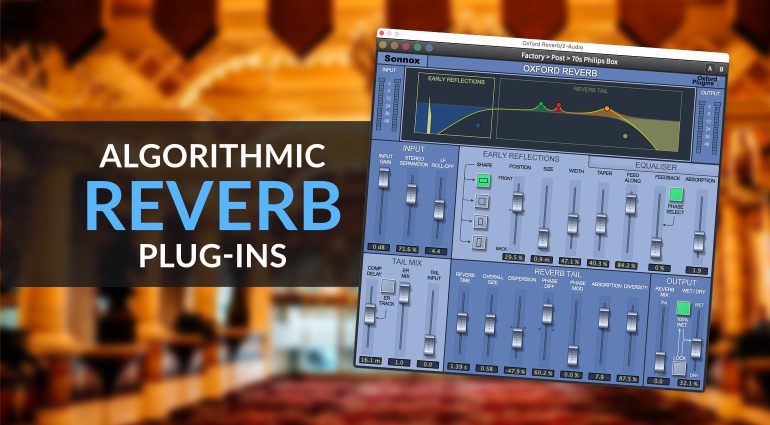


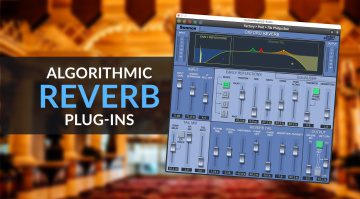

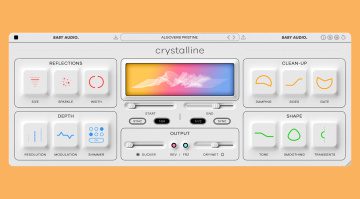
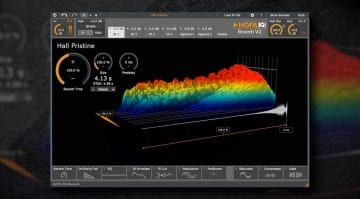
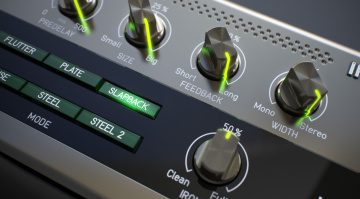

These seem to be more about sponsored reverbs or providers rather than “the best”. Notably missing are Reverb Foundry Tai Chi and, even more so, Liquidsonics Cinematic Rooms (Pro). Also missing are the revered Lexicon Native reverbs, and the popular ValhallaDSP reverbs.
this👆
The Bricasti hasn’t been around that long.
I tried Baby Audio Crystalline, and it reminded me so much of Logic Pro’s ChromaVerb that I started doing side by side comparisons to see if ChromaVerb could do what Crystalline could. And for my purposes, they overlap 1:1. And I find the ChromaVerb interface to be more straightforward.
Hi Nathanael,
I’ve been thinking about getting Crystalline, but I already have Logic so it sounds as if there’s no reason for me to get Crystalline? Are you aware of a reverb (or a ChromaVer preset) that would give me a really naturalistic, very LONG reverb? For piano, I already use the built in Taj Mahal preset in Pianoteq, which I think is quite good, but I’m keen to know about any freestanding options for non-piano sounds, or that sound even better than the Pianoteq preset. Thanks, Jim
Blackhole is the best by far and on offer at PluginBoutique for $29.99 (No, I don’t work for them, just sharing).